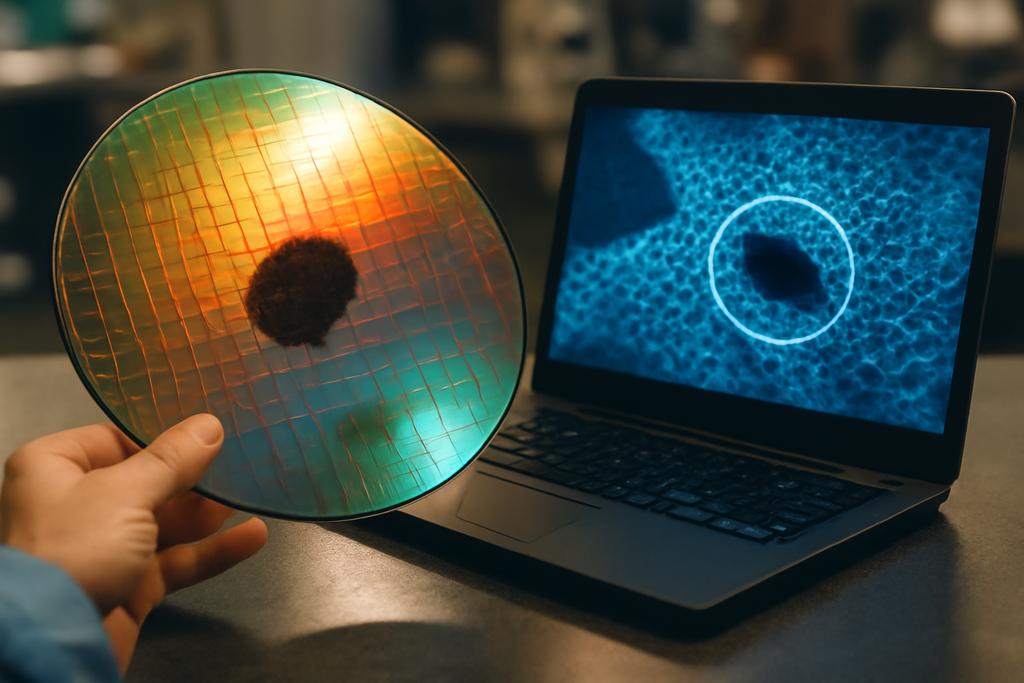The Perils of Imperfect Semiconductors
Solar cells, LEDs, transistors—the backbone of our modern technological world relies on semiconductors, materials that delicately balance conductivity. But even slight imperfections, called defects, can dramatically impact their performance. These defects act like tiny speed bumps on an electron highway, creating bottlenecks that reduce energy efficiency. For decades, researchers have wrestled with how to precisely model and predict these efficiency-sapping defects, a challenge amplified by the rise of complex new semiconductor materials.
A New Lens on Semiconductor Defects
A groundbreaking study from the Technical University of Denmark offers a fresh perspective. Led by Jiban Kangsabanik and Kristian S. Thygesen, the researchers have developed a new method for calculating the impact of defects on semiconductor devices, providing a level of precision previously unattainable. Their approach moves beyond simplistic approximations, capturing the intricate dynamics of how electrons and holes (the charge carriers in semiconductors) interact with these defects under different conditions.
Beyond the Simple Approximations
Previous methods often relied on oversimplified models of defect behavior. They frequently assumed that the rate-limiting factor in electron-hole recombination—the process that wastes energy—was a single, easily identifiable step. This is akin to assuming that a single pothole is the sole cause of a traffic jam, ignoring the cumulative effect of many smaller disruptions. The new model developed by Kangsabanik and Thygesen goes deeper, tackling the complexity head-on. It doesn’t assume a single rate-limiting step; instead, it solves the complete set of equations governing the recombination process, accounting for the interactions of electrons and holes with all possible charge states of the defects, regardless of their position in the material’s energy structure.
The Power of the Full Picture
The researchers’ method is a quantum leap in accuracy. By considering the full complexity of charge dynamics, they can accurately predict the impact of even highly anharmonic defects—those with irregular energy landscapes that make them especially hard to model. They demonstrate the importance of considering both radiative and non-radiative recombination channels, showing how these two mechanisms interplay in complex ways to determine the overall efficiency loss. This nuanced approach leads to a more accurate prediction of device performance across various doping concentrations and operating conditions.
Real-World Impact: Emerging Photovoltaic Materials
To demonstrate the power of their approach, Kangsabanik and Thygesen applied their model to several promising photovoltaic materials, including kesterites and copper indium gallium selenide (CIGS). These materials are seen as potential replacements for traditional silicon solar cells due to their abundance and ability to absorb sunlight more effectively. However, their efficiency has been hampered by defects, making it crucial to understand and mitigate their impact.
The new model reveals that previously assumed assumptions about defect behavior, for these materials, are significantly off, leading to large errors in the prediction of device performance. It highlights that for a comprehensive understanding of the impact of defects, it’s not enough to merely look at the position of the defects within the material’s energy structure. Instead, it’s crucial to have a detailed picture of the transition rates between different charge states, considering all pathways of carrier capture and recombination. Such insights are critical for engineering these materials to achieve their full potential.
Beyond Solar Cells: A Broader Impact
The implications of this research extend far beyond solar cells. The improved modeling of defect-assisted recombination has far-reaching applications in other semiconductor technologies, including LEDs, transistors, and even emerging quantum technologies. A more accurate understanding of how defects influence performance will be vital in developing more efficient, robust, and reliable devices across a wide range of applications.
The Future of Defect-Tolerant Semiconductors
The work by Kangsabanik and Thygesen marks a substantial advance in our ability to design defect-tolerant semiconductors. By providing a highly accurate method to predict the effects of defects, this research equips materials scientists with a powerful tool to develop semiconductors with superior performance. This is crucial for achieving advances in renewable energy, electronics, and many other fields where semiconductors form the foundation.










